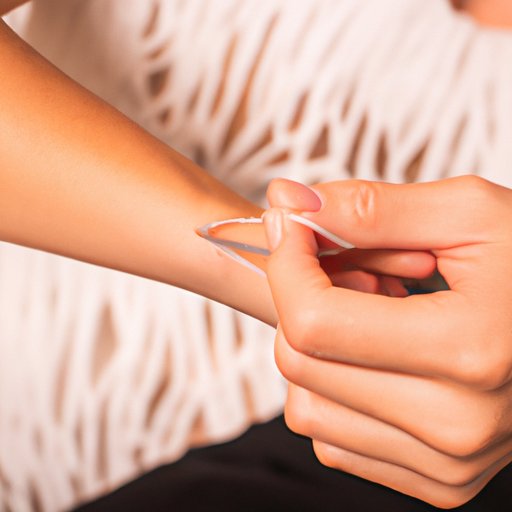
I. Introduction
A torn rotator cuff is a common injury that can cause pain and limited mobility in the shoulder. While surgery is often necessary for severe cases, there are also natural methods for healing a torn rotator cuff that can reduce inflammation, promote tissue repair, and restore shoulder movement. In this article, we will explore various natural methods that can help heal a torn rotator cuff. Please note that these methods should be used under the guidance of a healthcare provider.
II. Incorporating Anti-inflammatory Foods into Your Diet
Anti-inflammatory foods are those that can help reduce inflammation in the body. Consuming these foods is essential for promoting the healing process of a torn rotator cuff. Some anti-inflammatory foods that help in reducing inflammation and pain are ginger, turmeric and Omega-3 rich fish.
Ginger is known for its ability to reduce inflammation in the body. Adding grated ginger to stir-fries, salads, or smoothies can be a great way to incorporate ginger into your daily diet. Turmeric is another powerful anti-inflammatory spice that can be used in teas, soups, curries, or even in smoothie bowls. Omega-3-rich fish like salmon or sardines can also be included in your diet to reduce inflammation.
III. Rest and Ice Therapy
Rest and ice therapy are crucial components in the healing process of a rotator cuff injury. Rest provides time for the damaged tissue to repair, and ice therapy helps to reduce inflammation and pain. An optimal duration for ice therapy is 20 minutes at a time, four times a day during the first 72-96 hours following the injury.
To apply ice therapy, wrap an ice pack in a towel and apply it to the affected area for 20 minutes. It is important to avoid direct contact of ice with the skin, as it can cause frostbite.
IV. Physical Therapy Exercises
Physical therapy exercises are essential for restoring shoulder movement and strengthening the muscles around the rotator cuff. However, it is important to note that certain exercises can exacerbate the pain and should be avoided under the guidance of a healthcare provider. Some of the easiest and most effective exercises for healing a torn rotator cuff include wall walks, shoulder blade squeezes etc.
V. Heat Therapy
While ice therapy reduces inflammation, heat therapy helps in increasing blood flow to the injured area and promoting tissue repair. Applying heat after the initial 72-96 hours helps in promoting tissue healing. Heat therapy can be applied through a hot water bottle or heating pad, and should be applied for a duration of 20 minutes at a time.
VI. Acupuncture
Acupuncture is a traditional Chinese medicine treatment that involves the insertion of fine needles into specific points in the skin. Acupuncture can be an effective tool for easing pain, reducing inflammation, and promoting tissue repair. It is important to find an experienced and well-qualified acupuncturist to perform this procedure, and consult with a healthcare provider beforehand.
The acupuncture procedure involves the insertion of needles and can cause mild discomfort but should not cause intense pain. The needles are left in for 15 to 30 minutes, and the treatment can be repeated as needed.
VII. Massage Therapy
Deep tissue massage can be helpful for increasing blood flow, promoting tissue repair, and reducing inflammation. It is important to use a professional masseuse who is experienced in treating rotator cuff injuries. Some techniques that can be used include trigger point release to target specific points of tension or adhesions around the injury.
VIII. Conclusion
Healing a torn rotator cuff naturally involves a multi-faceted approach. Incorporating anti-inflammatory foods into your diet, rest and ice therapy, physical therapy exercises, heat therapy, acupuncture, and massage therapy are all important methods for natural healing. However, it is important to consult with a healthcare provider beforehand to ensure that these treatments are safe and appropriate for your specific situation.




